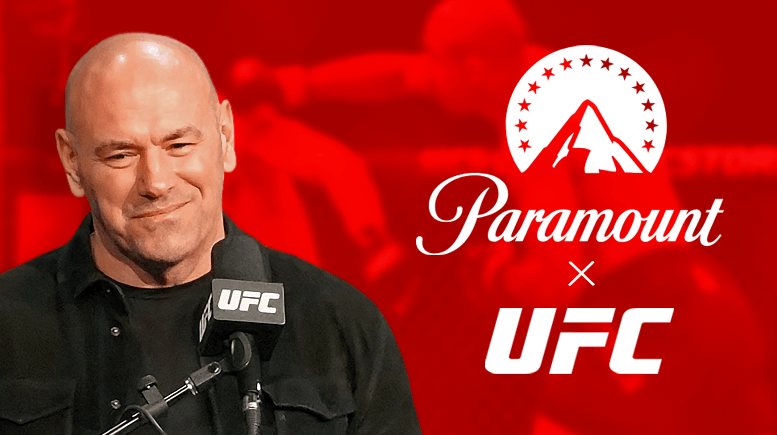
Article Summary:
|
The Ultimate Fighting Championship (UFC) is set to make one of the biggest broadcasting moves in its history. Beginning in 2026, the promotion’s events in the United States will no longer follow the traditional pay-per-view (PPV) model. Instead, under a seven-year, $7.7 billion deal with Paramount Skydance Corporation, all UFC fight cards, from blockbuster championship nights to weekly Fight Nights, will be available to stream on Paramount+ at no extra cost to subscribers.
For decades, UFC’s biggest events commanded premium PPV prices, often around $80 per card in recent years. This new arrangement removes that barrier, bundling 13 numbered “main” events and 30 Fight Night cards each year into Paramount+’s regular subscription fee (between $8 and $13 per month). Select numbered events will also air live on CBS, making them accessible to millions of households without the need for streaming subscriptions.
UFC President Dana White called the agreement a “historic deal” and hinted that it will significantly expand the sport’s reach, attracting fans who may have been deterred by the PPV format's pricing.
The agreement reportedly came together in a whirlwind 48-hour negotiation window, with major involvement from Paramount CEO David Ellison, White, and TKO Group’s President Mark Shapiro. With UFC’s contract with ESPN due to end in 2025, multiple media giants were rumoured to be in the running. In the end, Paramount emerged as the preferred partner, offering not just financial muscle but also a clear vision for making UFC a mainstream fixture on both streaming and broadcast television.
The news of UFC’s shift to Paramount+ sparked an immediate and passionate response across social media, with many fans celebrating what they see as a long-overdue win for affordability and accessibility. One fan summed up the mood on X (formerly Twitter):
Another commenter was quick to point out the historic nature of the change:
“Is this the first time in the modern history of the company that being a UFC fan might get cheaper? That’s the most shocking part of this.”
Not all responses were unreservedly positive. Some questioned what the shift away from PPV could mean for fighters whose contracts include PPV bonus structures. One fan asked bluntly:
Industry voices also weighed in. David Ellison, CEO of Paramount Skydance, positioned the deal as a key step in growing live sports on Paramount+, while analysts highlighted CBS’s ability to put UFC in front of mainstream audiences that may have never paid for a fight before.
Financial markets reacted too. Shares in UFC parent company TKO Group Holdings jumped more than 8% following the announcement, while Paramount stock dipped around 5%, a mixed reception that reflects both optimism about UFC’s growth potential and investor caution around Paramount’s aggressive sports strategy.
UFC President Dana White added a final twist, confirming that while the traditional PPV model will disappear for regular numbered events, it may not vanish entirely. For the right “mega-fights,” PPV could still return as a one-off option, but for the bulk of the calendar, fans can expect an all-in subscription experience.
This isn’t just about UFC; it reflects a broader industry trend away from individual event sales and toward subscription-based “all-in” access, similar to WWE’s transition when it partnered with Peacock in the U.S. It’s a move that could pressure other combat sports promotions, like boxing, to rethink how they reach audiences.
If successful, this partnership could redefine how fight sports are consumed, making the PPV model a relic of the past.
For those looking to add even more excitement to fight night, our best UFC sportsbooks guide lists the top platforms for UFC betting, complete with competitive odds and fight night promotions.